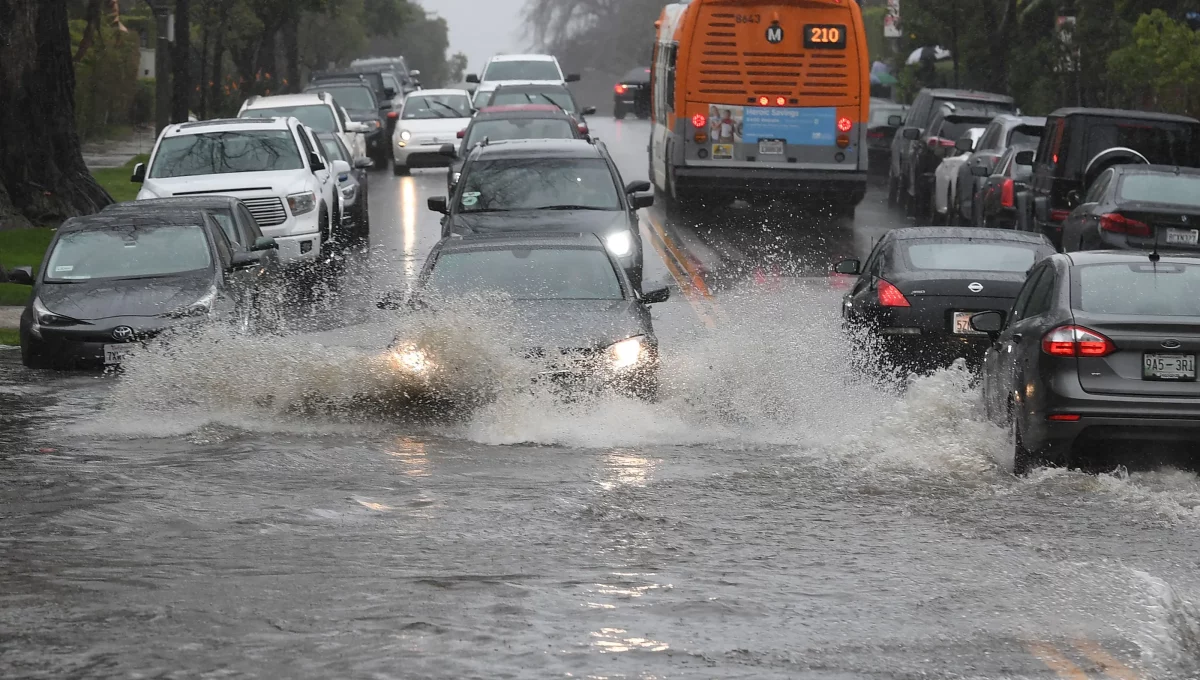The deadly storm-ravaged California scrambled to clean up and repair widespread damage on Wednesday, January 11 as the lashing rain eased in many areas.
The latest storm that began on Monday was one in a series that began late last month and repairing the damage may cost more than $1 billion, said Adam Smith, a disaster expert with the National Oceanic and Atmospheric Administration, the Los Angeles Times reported.

According to sources, at least 17 people have died in the storms striking the State. The figure is likely to rise, Governor. Gavin Newsom said on Tuesday during a visit to the scenic town of Capitola on the Santa Cruz coast.
During the incident, a pickup truck driver and a motorcyclist were killed early Tuesday in the San Joaquin Valley when a tree that had been struck by lightning fell on them, authorities said in a statement.

The report indicates that more than half of California’s 58 counties were declared disaster areas, the governor said.
Workers who were reopening major highways that were closed by rock-slides, washed out by flooding or smothered with mud while more than 10,000 people who were ordered out of seaside towns on the central coast were allowed to return home.
Thousands of people living near rain-swollen creeks and rivers remained under evacuation orders.
In the San Joaquin Valley, raging waters from Bear Creek flooded parts of the city of Merced and neighboring Planada, a small agricultural community along a highway leading to Yosemite National Park.

All 4,000 residents of Planada were ordered to leave Tuesday morning. Neighborhoods were under water with cars submerged up to their roofs. Residents ordered to evacuate carried whatever they could salvage on their backs as they left in the rain.
The most recent atmospheric river a long plume of moisture stretching into the Pacific that can drop staggering amounts of rain and snow has eased in some areas. Light to moderate rain with some thundershowers was forecast to arrive on Wednesday in Northern California. A longer storm system was predicted to last from Friday until Jan. 17.

Despite the rain, most of the state remained in extreme or severe drought, according to the U.S. Drought Monitor.
The storms may help locally “but will not resolve the long-term drought challenges,” said Rick Spinrad, administrator of the National Oceanic and Atmospheric Administration.
Damage from the storm included washed-out roads and seaside businesses flooded by 20-foot (6-meter) surf that pounded Santa Cruz County.

Many areas saw unprecedented amounts of rain coupled with furious winds and even hail and lightning that knocked down trees and damaged electrical lines.
Read Also:Storm Hurricane Nicole hits Florida at Warning Speed
More than 75,000 homes and businesses around the state were without power as of late Tuesday night, according to the website Poweroutage.us.

Mudslides damaged some homes in pricey Los Angeles hillside areas, while further up the coast a sinkhole damaged 15 homes in the rural Santa Barbara County community of Orcutt.
Follow us on Twitter at Switch Media Kenya.
In San Francisco, a tree fell on a commuter bus on Tuesday without causing injuries and lightning struck the city’s iconic Transamerica Pyramid building without damage. High winds also ripped away part of the roof of a large apartment building.

Mud-flows dragged sheds, gazebos and outhouses into the creek, Briggs said. After helping neighbors get to higher ground, he returned home to find his fence destroyed by waist-deep mud.










































